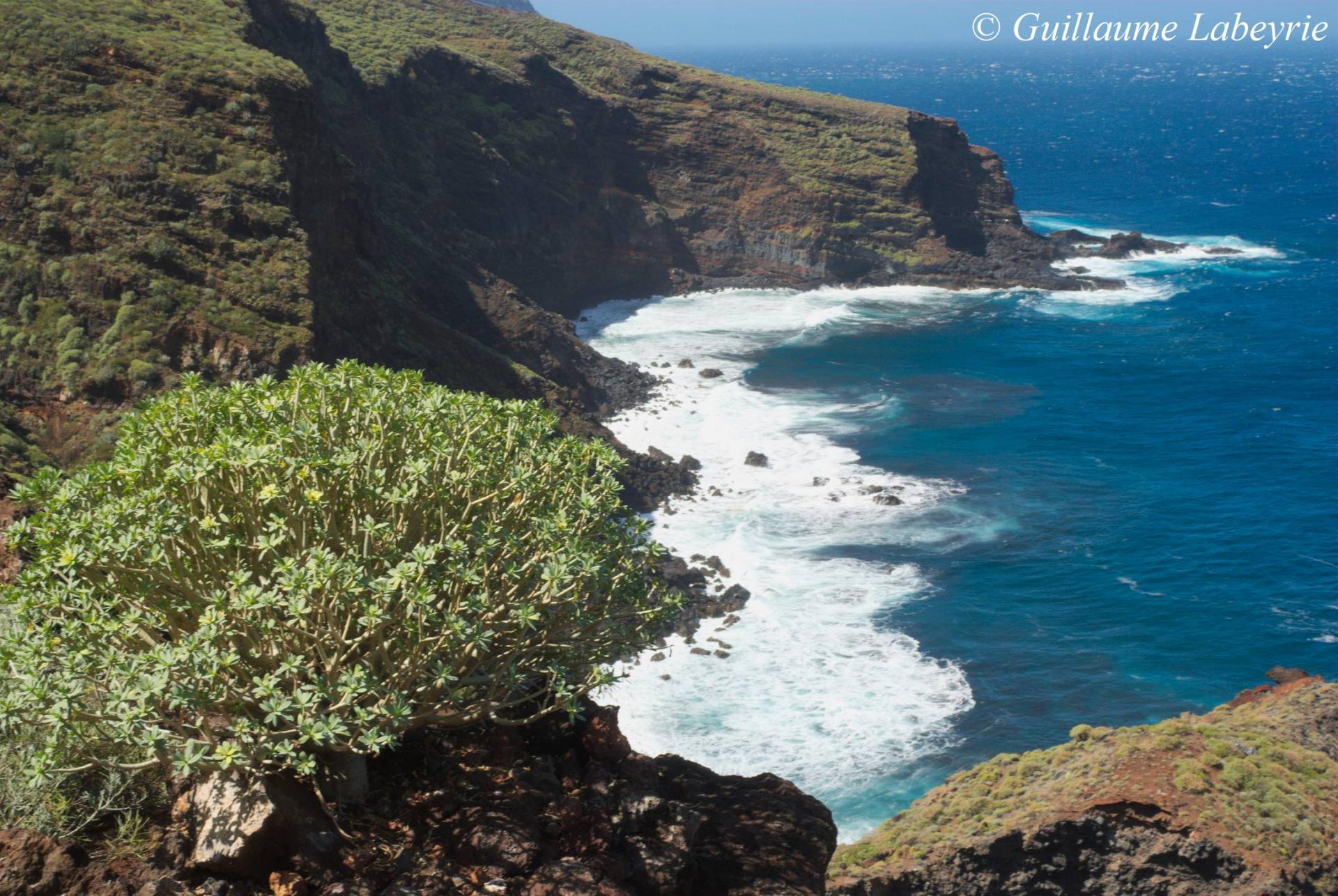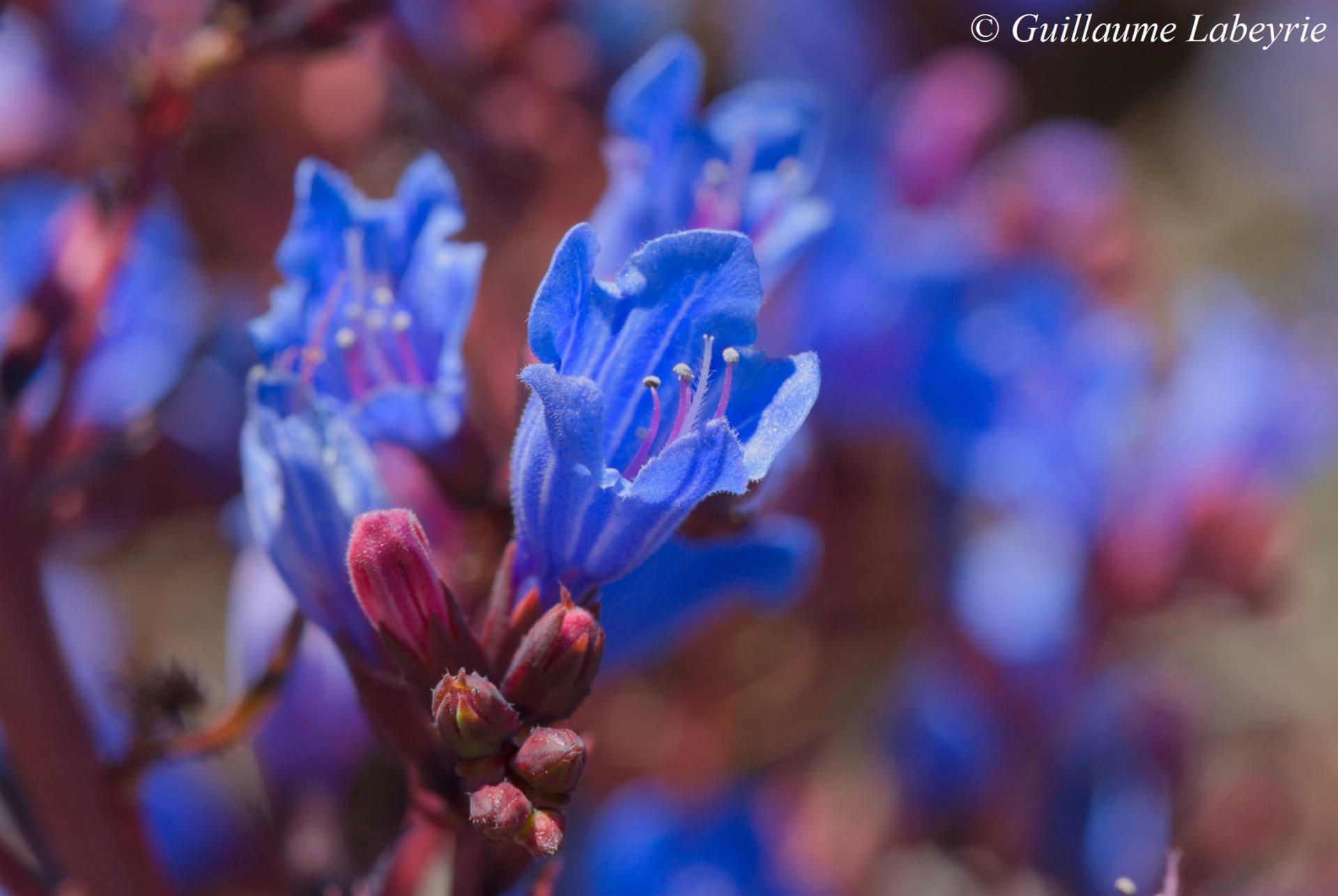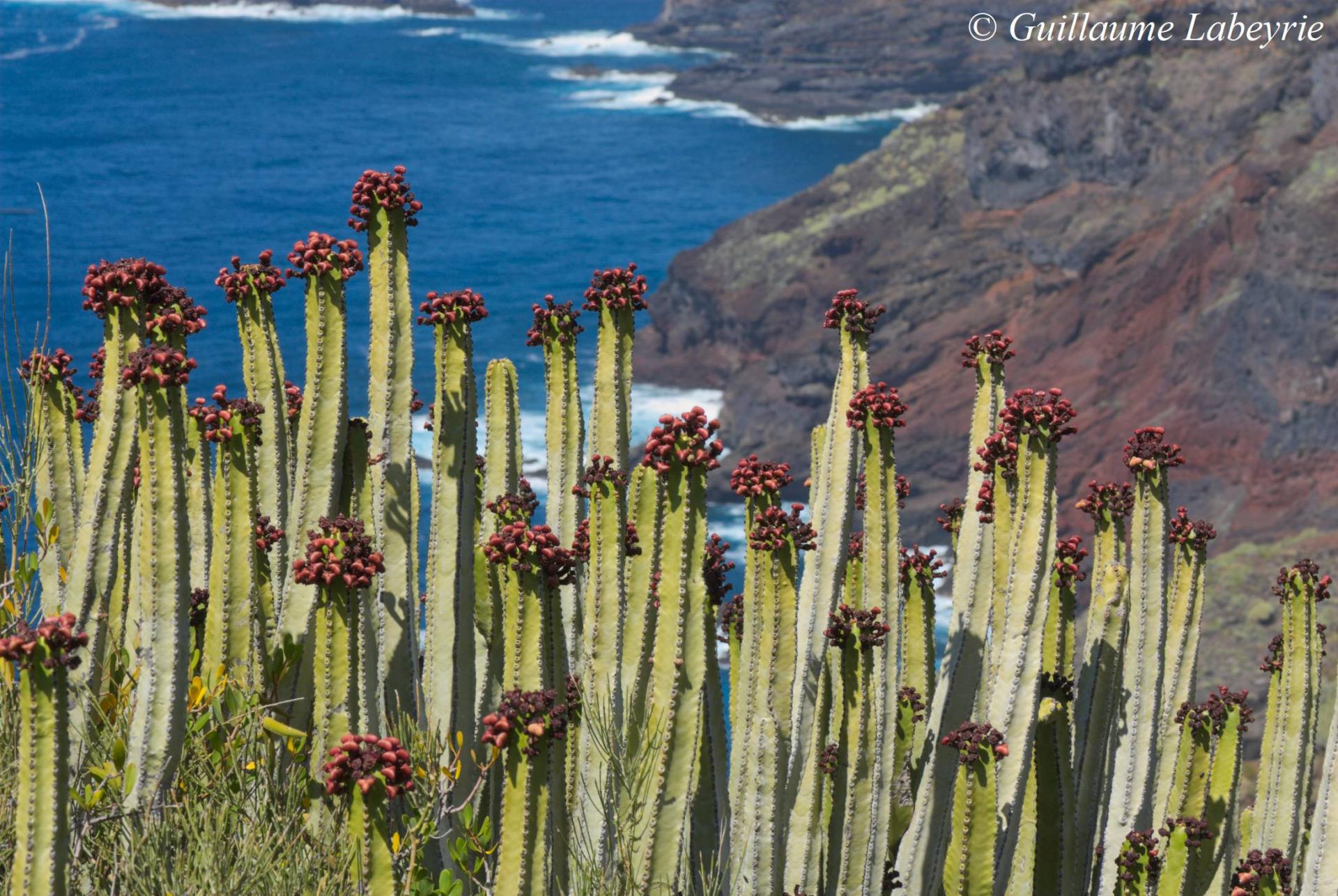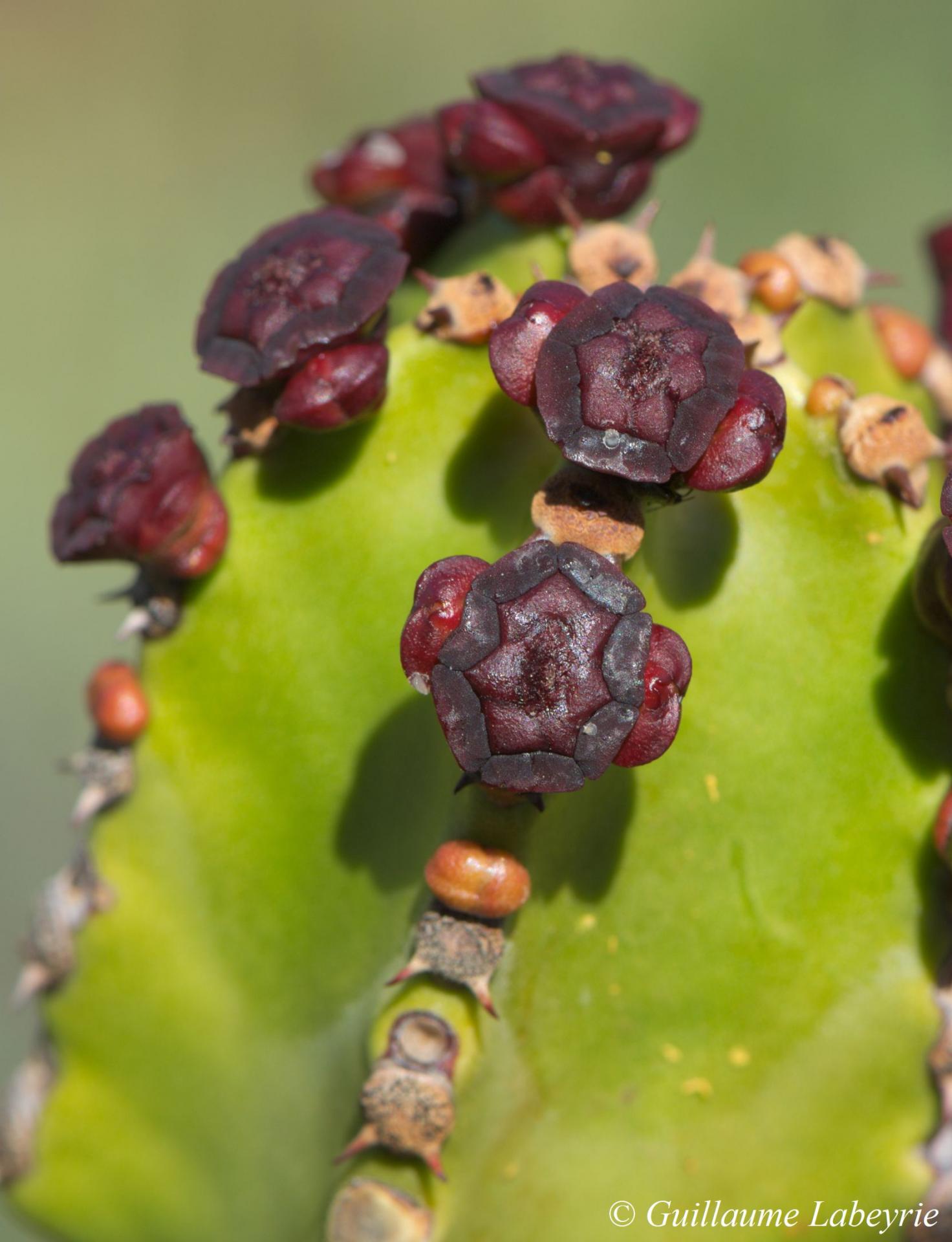The volcanic archipelago of the Canaries is located in the Atlantic, 1200 km southwest of Spain but only 250 km from the coasts of Morocco. The island of La Palma described in this section is one of the seven main islands. Relatively sparsely populated, this is a mountainous and wooden island, with a very rugged terrain. Due to its exceptional natural heritage, the whole island was designed a Unesco Biosphere Reserve in 2002.

Caldera de Taburiente. This huge crater 7 km wide and 12 km long is what remains of a collapsed volcano. The impressive cliffs circling the caldera are up to 1500 m high, culminating at 2400 m of altitude. A National Park protects this exceptional natural site.

The wild coast of Hiscaguan. Located at the northeast of the island, this strech of coast is boasting high cliff battered by the ocean. Access to the sea is scarce, mainly by way of barrancos, deep canyons going down from the mountain.

Cumbre Vieja. The southern half of the island, with a lower altitude than the north, is occupied by an active volcano, the Cumbre Vieja. Striking landscapes there include craters, lava fields, ... This area of extraordinary geological interest is protected by a National Park.

Pinar de Garafia Nature Reserve. Located in the north of the island this integral reserve protects one of the most beautiful Canarian pine forest. In the lower part of the forest, the humidity brought by the trade winds results in the presence of fog or clouds.
Flora
The islands of Macaronesia (an area including the Canaries, Azores, Madeira et Cape Verde) share a rich and original flora, with a high degree of endemism. The species shown here are grouped by families, presented by alphabetic order. The definition of the families follow the APG IV system of flowering plants classification (2016).
Family: Apocynaceae

Ceropegia dichotoma. This strange plant do have some small leaves, but they rapidly fall off the stem. Endemic to the Canaries, this species is found in dry locations near the sea.
Family: Boraginaceae

Echium wildpretii subsp. trichosiphon. This is probably the most spectacular plant in the Canaries. It grows in dry and rocky areas at high altitude, above 2000 m. The flowering spike can grow up to 4 meters and contains thousands of flowers, which attract many insects. The susbspecies trichosiphon shown here, with its pink and purple flowers, is found only in La Palma on the ridge of the Caldera de Taburiente where it is threatened by goats. The subspecies wildpretii with red flowers occurs only Mount Teide, on Tenerife island.

Flowers of Echium wildpretii subsp. trichosiphon.

Echium gentianoides. This other rare bugloss grows in the same habitat than the previous species. It is a large shrub with glabrous leaves and deep blue flowers. This species is endemic to La Palma, and threatened by overgrazing.

Echium bethencourtianum. This bugloss also forms large shrubs, with slightly elongated flower spikes carrying white flowers. The leaves are elongated with smooth edges. This species has a very restricted range, in the barrancos of the northern coast of La Palma.
Family: Brassicaceae

Erysimum scoparium. This pretty species belongs to the cabbage family. It grows in arid lands at high altitude on Tenerife, Grand Canaria and La Palma.
Family: Cistaceae

Cistus symphytifolius. This endemic rockrose is typical from the dry Canary pine forest, where it can form large populations. It is a tall plant with large pink flowers. Its seeds were consumed by the Guanches, the pre-Hispanic inhabitants of the Canary islands.
Family: Crassulaceae

Rosette of Aeonium sp. The genus Aeonium belongs to stonecrop family, replacing in the Canaries the genus Sedum (stonecrops) et Sempervivum (houseleeks). About thirty species are found only in the Canary islands, a few others also in Morocco and Ethiopia.

Aeonium spathulatum. This nice species endemic to the Canaries has many small rosettes and red stems with bright yellow flowers. It occurs in all the islands except Lanzarote and Fuerteventura.

Aeonium aureum. This other endemic Aeonium species occurs in all the islands except Lanzarote and Fuerteventura. The single rosette has large spatulate leaves, and the flowers are yellow.
Family: Euphorbiaceae

The Canary island spurge (Euphorbia canariensis). This strange spurge looks like a cactus. Endemic to the islands, this species grows mainly in dry cliffs near the coast.

Flowers of Euphorbia canariensis.

Euphorbia balsamifera. This nice spurge is found in dry and rocky places. It is a small tree growing up to 2 m tall, with a highly divaricated yellow trunk. This species occurs in the Canary islands, in North Africa and Somalia.

Fruit of Euphorbia balsamifera.
Family: Fabaceae

Adenocarpus viscosus. This broom-like species has glandulous stems and flowers. The dark pods with a rough surface are distinctive. Endemic to La Palma and Tenerife, this plant is found in rocky slopes.
Family: Liliaceae

The Canary islands dragon tree (Dracaena draco). This emblematic species can grow to a large size and old age. This strange plant is native to the Canaries, Madeira and Cape Verde, with also a population in Morocco. Almost extinct in the wild, the dragon tree is however widely cultivated.
Family: Orchidaceae

La Palma orchid (Orchis lapalmensis = Orchis mascula subsp. lapalmensis). This Orchis is found only on La Palma, where it seems rather uncommon. It can be found among bushes in lava fields.
Family: Plantaginaceae

Webb's plantain (Plantago webbii). This plantain is recognizable by its silvery erected leaves. Endemic to La Palma, Tenerife and Gran Canaria, in occurs in lava fields.
Family: Pteridaceae

Adiantum reniforme. This small fern with peculiar leaves grows in damp overhangs, usually at the bottom of barrancos. It is found only in the Canary islands.
Family: Rosaceae

Bencomia exstipulata. This plant from the rose family grows on the ridge of the Caldera de Taburiente. It forms large bushes up to 2 m tall, with a highly divided trunk and compound leaves. Endemic to La Palma and Tenerife, it nearly became extinct because of overgrazing (only a few tens of individuals remained in each island). Due to intensive protection programs, the species recovered to some extent, but it is still considered endangered.
Family: Scrophulariaceae

Scrophularia glabrata. This figwort species is endemic to La Palma and Tenerife. It grows on the arid slopes of volcanic ridges, usually in the undergrowth of Canary pine forests. It has distinctive simple bright green leaves.
Family: Violaceae

La Palma's violet (Viola palmensis). Family: Violaceae. This nice endemic violet also grows in the fragile habitat on the ridge of the Caldera de taburiente. Also endangered, this species benefits from conservation programs.
Fauna
Despite being quite rich in particular with many endemic invertebrate species, fauna is quite inconspicous on the islands. Probably its most famous representatives are the two endemic pigeons leaving in the remnants of the laurel forests, the white-tailed laurel pigeon (Columba junoniae) and the Bolle's pigeon (Columba bolli). Except the La Palma lizard, very common, one can mainly observe a few species of butterflies, some of wich are endemic.
Reptiles
Family: Lacertidae

La Palma lizard (Gallotia galloti subsp. palmae). This lizard with a broad head can reach up to 40 cm. Some males are brightly colored, with a blue throat. Endemic to La Palma, this lizard is very common in many habitats of the island. Three other subspecies of Gallotia galloti are found on the island of Tenerife.
Family: Phyllodactylidae

The Tenerife gecko (Tarentola delalandii). This small dark gecko is found in rock cracks, stone walls, ... Endemic to the Canary islands, it occurs on Tenerife and La Palma.
Butterflies (Lepidoptera)
Family: Nymphalidae / Satyrinae

The Canary speckled wood (Pararge xiphioides). This butterfly is endemic to the Canaries, where it occurs on most of the islands. It is quite abundant on La Palma. A closely related species, Pararge xiphia, is found on Madeira.
Family: Lycaenidae

The Canary blue (Cyclyrius webbianus). Despite its unusual color pattern, this species belongs to the lycaenids family. This small butterfly is often observed in the flower-rich bed of sunny barrancos. Restricted to the Canaries, it is found on most of the islands.

The long-tailed blue (Lampides boeticus). This butterfly is easily dentified by its mottled underwing pattern and its fine tails. Contrary to the previous species, the long-tailed blue has a worldwide distribution.
Arachnids
Family: Araneidae

The banded garden spider (Argiope trifasciata). This spider has a worlwide distibution. However, in Europe it is rectricted to the Iberian peninsula, including the Canary islands and Madeira.